You will never be alone at the Trevi Fountain. No matter what time of day, there will always be at least a couple of other people mulling around, enjoying the view.
Rome’s most famous, most enormous baroque fountain (26 meters high x 20 meters wide) was built in the 18th century at the junction of three roads (tre vie) to commemorate the completion of the aqueduct Acqua Vergine, a revival of ancient aqueduct Acqua Virgo, which supplied water to ancient Rome in 19 B.C.
It is Roman custom to build a fountain at the endpoint of an aquaduct.
Fonana di Trevi started out as a simple 15th century basin. In the 17th century, Pope Urban VIII wanted a more robust model, so he enlisted Bernini’s help. Too bad the pope died and the project was abandoned, otherwise there’d be another Bernini fountain.
By the time the project was revived, design contests were all the rage. Skilled architects competed and Nicola Salvi won (he actually came in second to a Florentine, but there was such outrage that local Salvi was awarded the commission), but ended up dying halfway through the construction. The fountain was completed by Giuseppe Pannini.
So, the legend here is that if you toss coins over your shoulder into the fountain, you will one day return to Rome. Each morning, workers clean the fountain and collect the nightly kitty. Annually, the fountain takes in over €1 million. Brilliant PR scheme or what?
The basin was built with monies collected from taxes levied on wine.
The fountain is backed up against Palazzo Poli. Corinthian pilasters link the two stories.
The sculpture depicts Tritons leading Neptune’s chariot. The Tritons’ sea horses (one wild, one tame) represent the moods of the sea. In the niches flanking Neptune, Abundance spills water from her urn and Salubrity holds a cup from which a snake drinks. Above, bas reliefs illustrate the aqueducts.
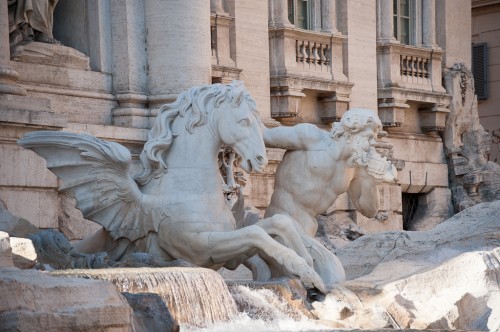
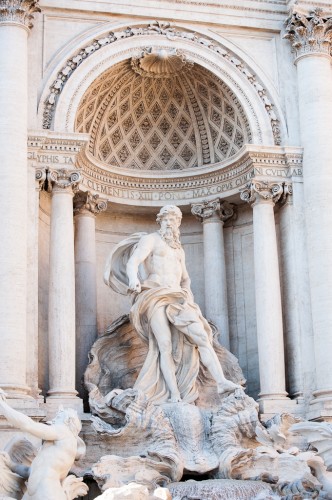
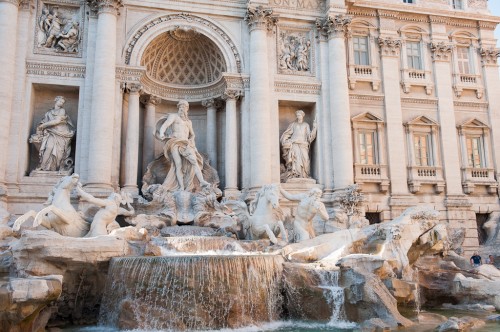
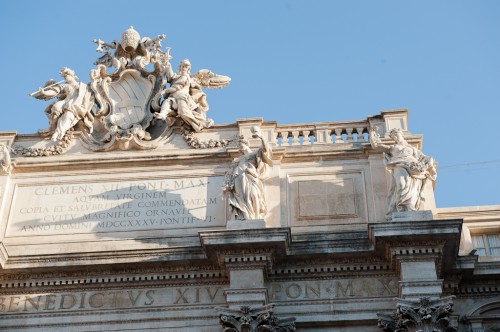
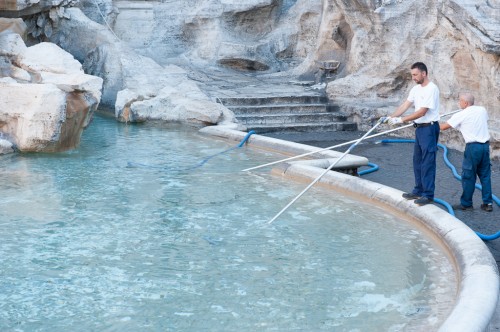
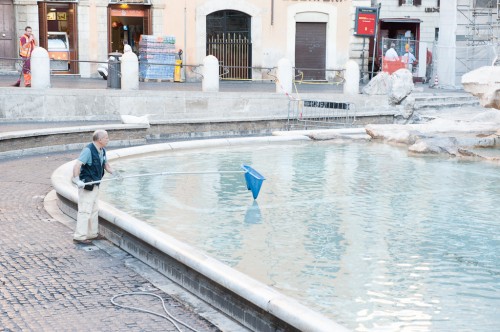
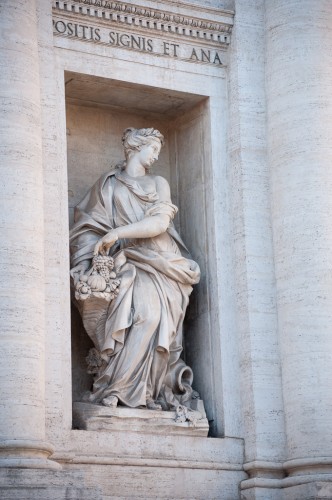
2 Responses to Fontana di Trevi